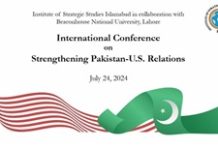How can real trust be built between and amongst nations? Perhaps the straight answer lies in the art of diplomacy. As Chinese and Japanese relations hit rock bottom, there are serious anti-Japanese sentiments in China and vice versa. Suffice to say, the countries do not like each other; nonetheless they need each other.
The Sino-Japanese bilateral trade hovered around over US $334 billion in 2012. The decline in trade in recent years has dented both economies. Japanese investment totaled US $460 million in the same period. There are a great number of Chinese people living in Japan, doing business, studying, and living with their families. To increase people-to-people exchanges, there are visa exemption agreements between the Japanese and Chinese governments. There are innumerable flights between the two countries.
However, trust-building looks far away between these two North East Asian nations. Both keep opening old and new chapters of tension, citing historical injustices. This means that international treaties and bilateral arrangements do not decide the final word between and amongst nations. Japan abides by the San Francisco peace treaty of 1951 and paid compensations to nations – not individuals – and opened bilateral negotiations to settle issues. Even Pakistan and Sri Lanka waived off reparations to Japan to help built its economy devastated by wars.
With the same spirit, Chinese and Japanese issues were also settled under the 1972 Japan-China Joint Communiqué. This Communiqué resolved all issues and claims between the two nations. Not courts but the foreign ministries of both countries could play a role in settling such cases. Legally speaking, these are also time-barred and age old claims. Once these historical matters are settled, they should not be opened up again for court hearings. Court jurisdiction is limited in such cases as it does not apply to the other nations’ jurisdiction. This would simply politicise the issue and disturb bilateral ties. Nations should move on instead of going back into historical ambushes.
History, for most nations, is a tragedy. How should history be re-written? Should activists re-write or change the course of history? Would that be acceptable? Japan invaded China in 1937 – eight years before it was devastated by US nuclear bombings in 1945. The Nanjing massacre is the most debated, disputed issue between the two nations. Some say that the massacre never happened. Henry S. Stokes in his book Falsehoods of the Allied Nations, Victorious View of History, as seen by a British journalist, for instance, says that the Nanjing massacre never took place, describing the event as a propaganda tool of the KMT Government against Japan.
In other records it is claimed that the Japanese army massacred over 300,000 Chinese in Nanjing. Stokes calls it fabricated propaganda as such killings, he claims, never happened. On the other hand, there are many books and records written on the Nanjing tragedy. The Nanjing War Tribunal, established in 1946 by the Government of Chiang Kai Shek, confirmed the massacre of over 300,000 Chinese by the Japanese imperial army.
With regards to recent tensions, Chinese citizens have been asking for financial compensation of millions of dollars from big Japanese companies for the tragedies they bore during wars. The number of such Chinese families is around 940. The figure could be greater. These Japanese companies are Mitsui Mining, Mitsubishi Materials Corp, Mitsubishi Corp, Nippon Coke & Engineering Industry Co, Nippon Yakin Kogyo, Yantai Misubishi Cement Co, and Mitsui O.S.K. Lines Ltd.
China claims that around 40,000 forced labourers were taken into Japan to work by the imperial Japanese army. Many of them did not come back after the war. Those who returned are between 80-90 years of age now and they have been demanding legal compensation and a public apology from Japan. In the past, China and Japan have not invited any third party to resolve their differences. Peace was restored between them under bilateral arrangements. With the same spirit, they hope to overcome their mutual differences currently, including the dispute over the Diaoyu/Senkaku and Yasukuni Shrine.
Under Japanese Prime Minister Shinzo Abe, relations with China have become even more troubled as he visited Tokyo’s controversial Yasukuni Shrine in December last (where Japanese war criminals are honoured along with millions of war dead). Often, Chinese and Japanese leaders will interact with each other at multilateral summits, but a high-level bilateral summit should be convened to address the Chinese-Japanese rift and to adopt forward-looking policies.
A mutual understanding on the Yasukuni Shrine, Diaoyu/Senkaku, historical narratives, and compensation must be agreed upon at once instead of re-opening these issues time and again. Both countries should find an amicable, peaceful, negotiated settlement that addresses and puts these disputes to rest.
Views expressed are of the author and do not necessarily reflect the views of ISS or of the Government of Pakistan.













